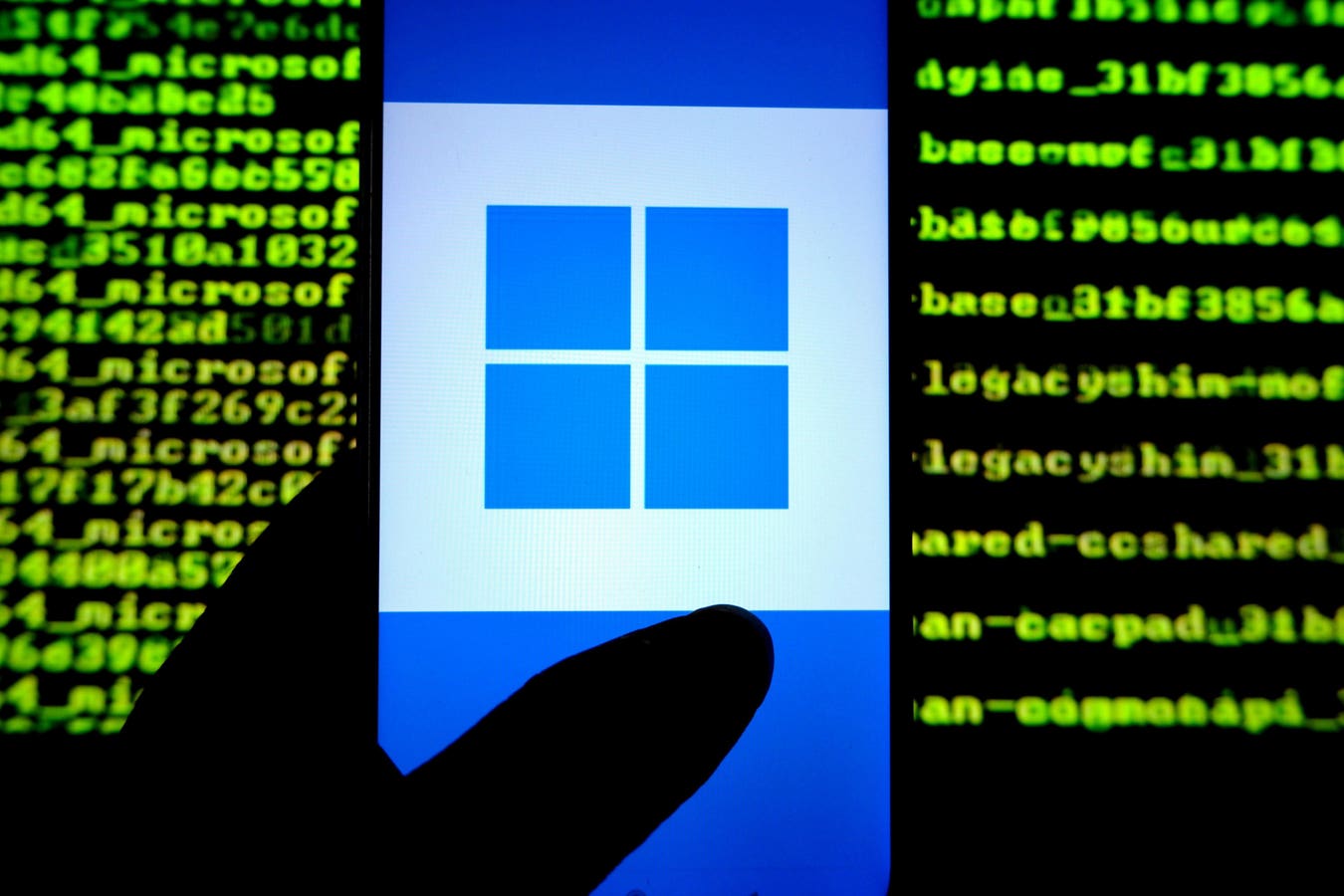Innovation and Technology
New Windows Ransomware Warning—$5,000 Buys A $500,000 Attack

Initial VanHelsing Ransomware Attacks Target Windows, At A Price
Although only launched on March 7, the VanHelsing ransomware-as-a-service (RaaS) platform has made a significant impact already. The threat actors behind VanHelsing have seen three enterprise victims fall victim in just two weeks. While that might seem like small numbers, it’s still a concerning development, especially considering the rapid expansion of the threat.
More Than Just Windows In The Crosshairs Of This New $500,000 Ransomware Threat
Check Point Research, a threat intelligence expert, has warned that while the initial successful attacks have been against Windows systems, VanHelsing is actually multi-platform and can also infect Linux, BSD, ARM, and ESXi systems. This multi-platform support broadens the reach of the ransomware, enabling it to target a wide variety of systems.
How VanHelsing Ransomware Works
According to Check Point, VanHelsing opened its doors to "reputable" affiliates, although the use of this term in these circumstances is questionable. To gain access to the platform, affiliates must pay a deposit of $5,000. After two blockchain confirmations of the victim’s ransom payment, the affiliates receive 80% of the revenue, while the remaining 20% is paid to the RaaS operators. For their money, the attackers are provided with a control panel and cross-platform locker to manage their attacks.
Conclusion
The emergence of VanHelsing ransomware is a concerning development, and enterprises must take immediate action to protect themselves. With its rapid expansion and multi-platform support, VanHelsing has the potential to cause significant damage. It’s essential to have robust cybersecurity measures in place to combat such sophisticated attacks.
Frequently Asked Questions
Q: What is VanHelsing ransomware?
A: VanHelsing is a ransomware-as-a-service (RaaS) platform that has been launched on March 7.
Q: Who is behind VanHelsing?
A: The threat actors behind VanHelsing are believed to be Russian cybercriminals.
Q: How does VanHelsing work?
A: VanHelsing is a multi-platform ransomware that can infect a wide variety of systems, including Windows, Linux, BSD, ARM, and ESXi. It operates by encrypting files and demanding a ransom in exchange for the decryption key.
Q: How much does it cost to join VanHelsing?
A: Affiliates must pay a deposit of $5,000 to gain access to the platform.
Q: How does VanHelsing make money?
A: After two blockchain confirmations of the victim’s ransom payment, the affiliates receive 80% of the revenue, while the remaining 20% is paid to the RaaS operators.
Innovation and Technology
ISC West Strives To Redefine The Future Of Converged Security

The Rise of Converged Threats
From ransomware campaigns that shut down building access systems, to IoT vulnerabilities that bridge physical and digital entry points, organizations are dealing with the reality that treating physical and cyber security as separate disciplines leaves dangerous gaps. That’s a core theme threading through ISC West 2025’s expanded educational tracks, keynote lineups, and panel sessions.
Identity as the New Security Perimeter
A major theme emerging from ISC West is the redefinition of "perimeter." In a world where physical and digital access points are increasingly interwoven, identity becomes the critical link. Gill believes the convergence of physical and cybersecurity is being driven by the need to secure identity, context, and intent—not just assets.
Cultural Hurdles and Strategic Shifts
But while the technology is advancing rapidly, many organizations still struggle with cultural inertia.
ISC West: The Industry’s New Convergence Hub
To support this vision, ISC West has expanded its cybersecurity and connected IoT pavilion, introduced a cyber hub sponsored by ZeroFox, and integrated RSA-curated educational tracks. Shaughnessy told me the SIA New Products and Solutions Showcase will highlight over 100 debut technologies—many blurring the line between physical and cyber applications.
Conclusion
As the attack surface grows more complex, ISC West is rising to meet the moment by reshaping how the industry thinks about defense. Threats don’t respect borders, so security can’t either. The future is converged—and it’s already underway.
FAQs
Q: What is the convergence of physical and cyber security?
A: The convergence of physical and cyber security refers to the merging of the two previously separate worlds of physical security (managing gates, guards, and surveillance systems) and cybersecurity (handling firewalls, malware, and identity threats).
Q: Why is convergence important?
A: Convergence is important because it allows organizations to address the increasingly interconnected threats that were previously handled separately.
Q: What are some key takeaways from ISC West 2025?
A: Some key takeaways from ISC West 2025 include the need for a unified approach to security, the importance of identity in securing access points, and the need for AI and machine learning to optimize security strategies.
Innovation and Technology
The Importance of Self-Care in the Digital Age: How Companies are Prioritizing Employee Wellbeing

As technology advances and the world becomes increasingly digital, the lines between work and personal life continue to blur. The rise of remote work, social media, and 24/7 connectivity has led to an epidemic of burnout, anxiety, and depression. However, there is a growing recognition of the importance of self-care in the digital age, and companies are starting to take notice.
The Rise of Burnout and Mental Health Concerns
With the rapid pace of technology and the constant demands of work, it’s no wonder that many individuals are experiencing burnout and mental health concerns. Long hours, endless emails, and the pressure to be constantly connected can take a toll on both physical and mental health. According to the World Health Organization (WHO), an estimated 300 million people worldwide suffer from depression, while 200 million people suffer from anxiety disorders.
The Impact on Productivity and Employee Engagement
When employees are struggling with burnout and mental health concerns, it can have a significant impact on productivity and employee engagement. According to a study by Gallup, 63% of employees are not engaged at work, and 43% are actively disengaged. This can lead to decreased job satisfaction, reduced efficiency, and increased turnover rates. By prioritizing employee wellbeing, companies can improve morale, boost productivity, and increase job satisfaction.
How Companies are Prioritizing Employee Wellbeing
So, what are companies doing to prioritize employee wellbeing and combat the rise of burnout and mental health concerns? Here are a few examples:
Flexible Work Arrangements
Many companies are offering flexible work arrangements, such as telecommuting, compressed workweeks, and flexible hours, to help employees better balance their work and personal life.
Mental Health Resources
Companies are also providing mental health resources, such as employee assistance programs (EAPs), mental health days, and access to mental health professionals, to help employees cope with stress and anxiety.
Wellness Initiatives
Some companies are even launching wellness initiatives, such as fitness classes, meditation sessions, and healthy snack programs, to promote overall wellbeing and reduce stress.
Conclusion
In conclusion, the importance of self-care in the digital age cannot be overstated. As technology continues to advance and the world becomes increasingly digital, it’s crucial for companies to prioritize employee wellbeing and provide the necessary resources and support to help employees thrive. By doing so, companies can improve morale, boost productivity, and increase job satisfaction, ultimately leading to a more productive and successful workforce.
FAQs
- What is burnout? Burnout is a state of emotional, mental, and physical exhaustion caused by prolonged stress, overwork, and lack of balance in life.
- What are some common signs of burnout? Common signs of burnout include chronic fatigue, decreased motivation, increased irritability, and decreased job satisfaction.
- How can I prioritize my own self-care? Prioritizing self-care can be as simple as taking a few minutes each day to breathe deeply, practicing gratitude, or setting aside time for relaxation and rejuvenation.
- What are some resources available to help me cope with stress and anxiety? There are many resources available, including employee assistance programs (EAPs), mental health professionals, and online resources such as mental health apps and online support groups.
Innovation and Technology
Can Deepfakes Harm Your Health?

Fake celebrity endorsements have always been a problem online—as Oprah has spoken about her frustration over fake ads for diet pills and supplements for many years. But in an age when virtually anyone can easily create a convincing video of anything they want in seconds, the problem is significantly amplified.
Tom Hanks is one of the high-profile figures who has felt the need to issue a public warning that deepfake video of him promoting “miracle cures and wonder drugs” are not genuine and could pose a threat to health.
If you wouldn’t necessarily trust Tom Hanks to give you medical advice anyway, what about a famous TV doctor? There have been several cases where deepfake videos of well-known professionals have been used to entice viewers into buying bootleg or illegal medicines for diabetes and high blood pressure.
Staying Healthy In The Age Of Deepfake Disinformation
The important thing to remember is that deepfake technology is as easy to spot and unconvincing now as it will ever be. Tomorrow, like all AI, it’s going to be much more sophisticated.
This is a scary prospect if you’re already wondering how you’re supposed to survive in a world where Oprah Winfrey and Tom Hanks are trying to kill you with bad advice.
Conclusion
Navigating the mountain of online content, help and advice related to health, exercise and diet online was a minefield at the best of times. Thanks to deepfakes, it’s getting a whole lot tricker. But by understanding the threat and taking a few steps to help you establish fact from fiction, we can all help to protect ourselves and each other from harm.
Frequently Asked Questions
Q: How do I spot a deepfake?
A: Look for unusual facial movements or audio and video that seem mismatched.
Q: What can I do to protect myself from deepfakes?
A: Develop your critical thinking and deepfake-era survival skills by understanding the threats, verifying information, and checking sources for reliability.
Q: What is being done to address the issue of deepfakes in healthcare?
A: Lawmakers in some areas are starting to get to grips with the sale of the challenge. The EU AI Act, China’s Generative AI Measures regulations, and various US state-level laws, all contain measures aimed at preventing harm.
Note: The article has been organized with headings and subheadings to make it easier to read and understand. The conclusion section summarizes the main points, and the FAQs section answers common questions about deepfakes and their impact on healthcare.
-

 Career Advice4 months ago
Career Advice4 months agoInterview with Dr. Kristy K. Taylor, WORxK Global News Magazine Founder
-

 Diversity and Inclusion (DEIA)4 months ago
Diversity and Inclusion (DEIA)4 months agoSarah Herrlinger Talks AirPods Pro Hearing Aid
-

 Career Advice4 months ago
Career Advice4 months agoNetWork Your Way to Success: Top Tips for Maximizing Your Professional Network
-

 Changemaker Interviews3 months ago
Changemaker Interviews3 months agoUnlocking Human Potential: Kim Groshek’s Journey to Transforming Leadership and Stress Resilience
-

 Diversity and Inclusion (DEIA)4 months ago
Diversity and Inclusion (DEIA)4 months agoThe Power of Belonging: Why Feeling Accepted Matters in the Workplace
-

 Global Trends and Politics4 months ago
Global Trends and Politics4 months agoHealth-care stocks fall after Warren PBM bill, Brian Thompson shooting
-

 Global Trends and Politics4 months ago
Global Trends and Politics4 months agoUnionization Goes Mainstream: How the Changing Workforce is Driving Demand for Collective Bargaining
-

 Training and Development4 months ago
Training and Development4 months agoLevel Up: How Upskilling Can Help You Stay Ahead of the Curve in a Rapidly Changing Industry





















